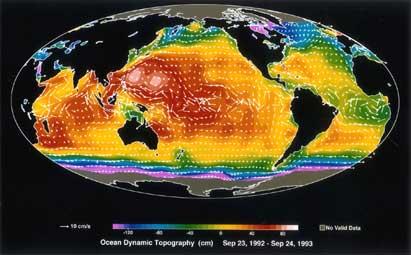Marine currents, argon and climate

American researchers have prepared a highly capable technique to detect aquatic argon. A particle accelerator has been modified to detect and quantify argon atoms. The apparatus detects the radioactive isotope argon-39 and is able to separate a single atom from argon 39 to 10,000 atoms. The aim is to use the technique to study marine currents and their evolution.
In fact, the 39 argon forms in the atmosphere when cosmic rays touch the normal argon and dissolve rapidly in the water. By being radioactive and losing radioactivity at constant speed, by measuring 39 argon in waters of different depths, researchers can know the last time on surface. To date, however, thousands of liters of water and months were needed to measure Argon 39 of the water. With the new technique, 10 liters of water and a few hours are enough to measure the argon concentration.
Analyzing the evolution of marine currents, we also analyze the evolution of the climate, closely related. For example, cold water currents move from the poles to the tropics and hot water from the tropics to the poles. The first ones move along the bottom of the ocean and the second ones on the surface. Along with water, marine currents distribute heat to the entire planet and therefore have a fundamental influence on the climate. Apparently, when the ice melted at the end of the last glaciation, the balance of marine currents broke and there were strong fluctuations in the climate. And there are climatologists who believe that global warming currently occurring can have a similar effect.
However, they do not know if the bright 39 is generated at constant speed and if not, it would not be a reliable indicator.
Buletina
Bidali zure helbide elektronikoa eta jaso asteroko buletina zure sarrera-ontzian











